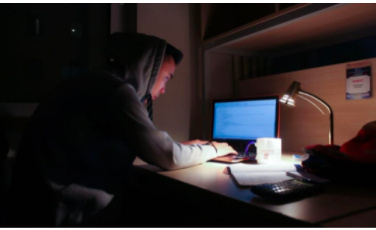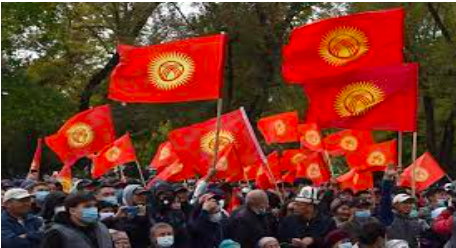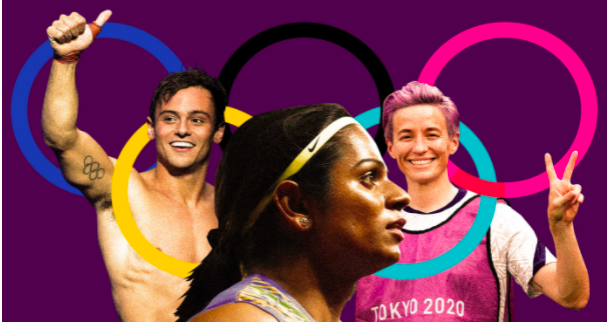Social media and censorship in Kazakhstan
Posted on : September 21, 2021Author : Nazia Jafri

Recently Kazakhstan banned a social media group and removed their content for a few days. Although due to the immense pressure from civil society and international community they were forced to open the same after a while but this short event highlights the social media situation in the country. The human rights group, Nagys Atajurt Eriktileri, from Almaty found that their YouTube channel was suspended without any warning.
This channel had been significant to the online protests in the country. Some of the videos here have more than 5 lakh views. This group has been working on videos of detention and torture of ethnic Kazakhs and other Turkic minorities in Xinjiang, China in contrast to the stories provided by the government. The authorities within the nation have been trying to stifle them through numerous ways and blocking website was a part of the same.
Similarly in May, Temirlan Ensebek, who had a satirical Instagram page Qaznews24, was detained and thoroughly questioned for his satires on Nazarbayev. This page had gathered more than five thousand followers but ultimately Temirlan removed the page due to the pressure from the government. As the authorities say that his detention was based on the wrong information that he was publishing, the online community in the country refuse to believe. Also in July the government blocked LinkedIn, a Microsoft subsidiary over the argument of fake advertisements and bogus profiles, for a few days. Almost 720,000 citizens are the members of LinkedIn account in Kazakhstan. These recent incidents points towards the social media and human rights violations in the country.
Although it is not a new phenomenon in the region, social media have often been referred here as a carrier of extremism by the authorities. The Kazakh government has been imposing restrictions on freedom of speech and expression since a very long time. According to Human Rights Watch there is a serious lack of a sincere political opposition group in the country.
Liberalisation of social media market in early 20s and later on its wide use in the neighbouring regions for protests alarmed the government to keep a tight check. There are provisions for strict monitoring and filtering in the region. The system is centralized and most of the content is filtered both officially and unofficially. There are very broad and unspecific media laws and many websites and journalists have been prosecuted on the same. According to Adil Soz, a Kazakh foundation for addressing corruption in Kazakh law and politics, between 2010 and 2015 every year five to nine independent websites and media organisations use to be banned for publishing content unfavourable to the government. The media landscape here mostly belongs to state owned groups or state subsidised media channels.
Banning of the group from Almaty or Instagram are not the first cases here, from time to time there are online protests and demonstrations but the government ensures to keep them at bay. In 2011 during the oil workers protest in Zhanaozen city, there was a wide use of both Facebook and twitter. The protests gained a lot of attention internationally but eventually it was fiercely supressed by the government. By 2014 they came up with a communication law that rules that prosecutor’s office can suspend any website that seems a threat to the interests of the nation. For this even court ruling will not be required. From that time common websites such as Twitter, Skype, Youtube and WhatsApp among others face frequent restrictions and shutdown in the region.
Under the pretext of technical issues, major telecommunication companies in the region also back-out at the time of protests and demonstrations. Giant media platforms including Google are also not available at most of such times. For example during the 2016 nationwide anti-land reform rallies all the big telecommunications companies such as Beeline, Kcell and Kazakhtelecom along with the government displayed inability to provide internet and displayed technical problems. Same was the case in 2019 Presidential elections. On the day of election the internet was frequently shut down and the residents were asked to install a national security certificate, which led to the internet user’s online activities being intercepted by the government.
Now there are 40 types of clauses for the regulation of the media. And any violation can lead to suspension or shutdown of the website or organisation. Kazakhstan ranked 155th out of 180 countries in World Press Freedom Index 2021. There are 13 million internet users in the country. The internet penetration in the country is also relatively high than the neighbouring regions. The authorities in the region manipulate online systems and file criminal cases against those who are critical of the government. Over the years as internet has gained popularity as expression of dissenting voices in Kazakhstan there is also a rigid control of the governmental authorities.
But, for now, despite of all the restrictions social media remains a flexible mode of communication for the people. Kazakhstani people have become accustomed to taking their views online and discussing social and political narratives over there. There are a large number of bloggers and netizens that are using different formats and coming out and expressing themselves against the government. Since 2018 there have been more than 1200 protests in the country which is far more than any neighbouring region has. These protests are mostly on issues of governmental policies and decisions and social welfare. Kazakhstan’s alternative media will keep on challenging the government or will it be supressed only the time can tell.
Readings:
Linked-Promo, https://linked-promo.com/en/
International Telecommunication Union (ITU), https://www.itu.int/en/Pages/default.aspx
BBC news, https://www.bbc.com/news/world-asia-pacific-15482614
Think before you post: Closing down social media space in Kazakhstan by Amnesty International, 2017.
Social media and the public interest, by Philip Napoli, 2019.
The Nazarbayev generation: Youth in Kazakhstan, by Marlene Laruelle, 2019.
The role of social media in Kazakhstani journalism by M Bulatova , 2017.
The status of media and the role of social media in Kazakhstan, Kyrgyzstan, Tajikistan and Uzbekistan by G. Ibrayeva, E. Turdubaeva, L. Olimova and N. Kosymova, 2018.
Nazia Jafri
Adjunct Researcher, Asia in Global Affairs
(The views, thoughts, and opinions expressed in the text belong solely to the author.)



